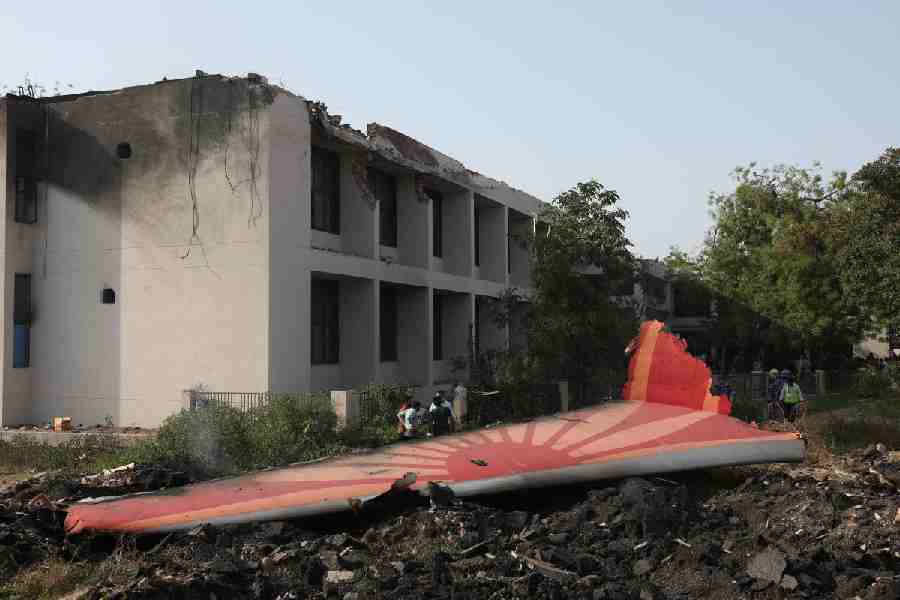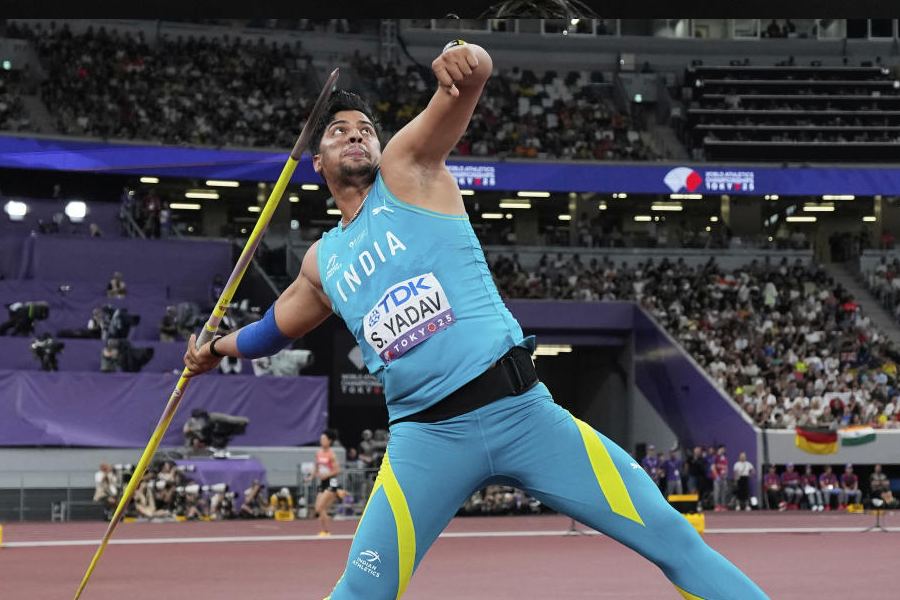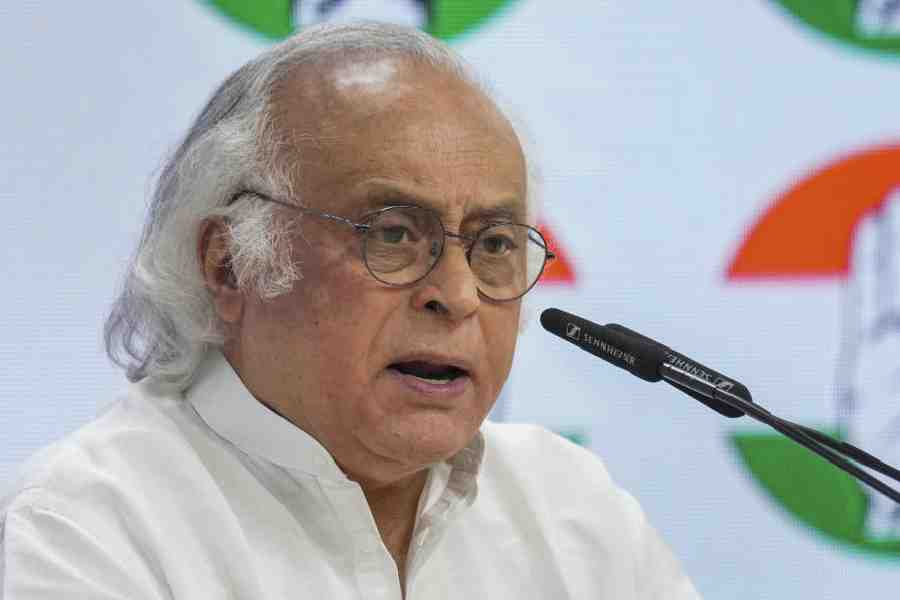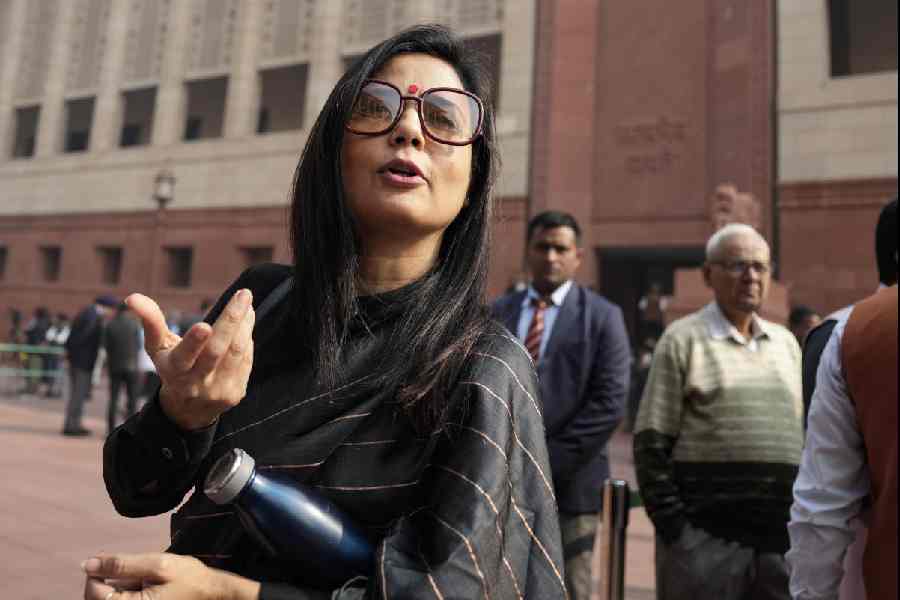 |
Chittaranjan Avenue showcases the best of fusion architecure, says Soumitra Das in the first of a three-part series on Calcutta’s arterial road
How does one feel in the presence of a man who has weathered at least 90 summers? You expect him to be a spokesperson of Clio, the muse of history. Nothing less. Panchanan Hazra is a tiny, dark, wizened man. His catheter trails behind him as he drags himself around on his buttocks. He belongs to the colony of bamboo artisans who decorate puja pandals, better known as Karmibrinda of Rambagan.
He is voluble and lucid. However, all that his memory has retained is visions of Victoria Memorial Hall being built and the colossal pipes that were being laid under Chittaranjan Avenue when it was being constructed. 'My father used to make fireworks and I used to go to the Maidan when Victoria Memorial was being built. When Central Avenue (as Chittaranjan Avenue was known earlier) was being laid out, the slum-dwellers were evicted. Many old houses were erased from the map. I can also remember huge pipes.' Probably, for drainage.
Before the avenue, Bowbazar Street running from east to west, was the city's backbone. Then the Calcutta Improvement Trust decided to build Central Avenue in 1911. By 1926, the northern portion of the stretch from Mahatma Gandhi Road (earlier Harrison Road) to Beadon Street, and the southern portion from M.G. Road to Bowbazar were complete. All the houses could boast new addresses. The next year, it was renamed Chittaranjan Avenue. By 1934, the section cutting through central Calcutta was complete. That, in short, is the history of the road.
That the new road had to plough through pre-existing houses and lanes is still quite evident if one looks carefully at certain old houses. One such is the house of Saroj Kumar Ghoshal, a doctor and social worker who had taken the trouble to introduce me to Hazra. He points to the ceiling of his home opposite Liberty cinema, saying: 'Originally, this house used to stand in Ashutosh Dey Lane. During road construction the alignment of the house had to be changed so that it could stand parallel to the avenue. The ceiling still shows where it was sliced off.'
The two houses to the right of this building, too, belong to the Ghoshal family and they look as if they had buckled under the impact of some tremendous force, that being the second upheaval this stretch had witnessed about 20 years ago. Many buildings had collapsed like houses of cards when the Metro railway was being constructed. Several houses south of Vivekananda Road are still shored up with heavy iron beams. The 84-year-old building next to Sharma & Sons of rabri fame, housing the Bengal Jewellery Manufacturing Company, was so badly damaged it had to be rebuilt at Metro rail's expense, says young Shubadip Roy, a partner of this gaudy, new jewellery mall.
Opposite it is a mansion heavily ornamented with mouldings and balconies. Stucco figures in the pediment indicate that it is of 1924 vintage. Because of its state of disrepair one feels tempted to describe it as haunted. But the entrance is under lock and key and the darwans live next door. This building next to Girish Park, too, is propped up with girders.
The beautiful porte cocheres and the wide pavements, too, were casualties of Metro construction. Not surprisingly, the older the structure the more resilient it seems to have been, testifying to the strength of its building material. Even buildings with all their windows shuttered and without any sign of life within are well preserved inside.
One such is Braj Dham in Rambagan. Fresh paint glimmers on the louvres and the twin Garudas on top look as if they are ready to take wing.
Another example is a mansion with the cupola at the corner of Ramesh Datta Street. It once belonged to Jatindra Mohan Maitra, an eye surgeon and Congress leader, and could easily have been supplanted from the boulevards of Paris. All the floors are deserted save the top where the tenants refused to disclose their identity.
Several magnificent buildings on this road are occupied by sub-tenants who refuse to budge. Thanks to our biased tenancy laws they enjoy the luxury of living in the middle of the city practically paying nothing. At 31 B C.R. Avenue, Prabha Surana says years ago, her nand (sister-in-law) used to be a tenant here. The house is under litigation, and her extended family has taken over.
When Central Avenue was under construction, the Marwari families that lived in Burrabazar and in the neighbouring areas decided to build their homes along the new road. As a result, classical architecture went native along the stretch from Vivekananda Road up to Mahajati Sadan. With their jharokhas, jalis of reinforced concrete and courtyards cohabiting with Corinthian pilasters and pediments, both Rajasthan and Attica came alive here. Many buildings lost their beauty once they were cemented over.
However, two of them are still show-stoppers. Nobody can miss Gopal Bhavan with its Ganesha in between Riddhi and Siddhi ensconced in the pediment at the Muktaram Babu Street corner. It is florid the way that Leon Bakst was flamboyant – dazzlingly so. The present owner, Krishna Kumar Nathany, 62, says his grandfather, Baldev Das Doodhwala, de facto founder of the Calcutta Stock Exchange, had constructed it in 1926. Inside, it has two courtyards and balustrades of solid marble and a shrine on the terrace with 'crazy china' ornamentation.
The other jewel is the more austere, art deco-flavoured Seksaria House opposite Girish Park. 'My grandfather had paid three times the prevailing price of land for this corner plot 60 years ago,' says Dinesh Seksaria, 52, an industrialist. The marble for flooring was imported from Italy. It is the only house with roads on all four sides. Glass in the same colour scheme graces all the windows and doors. The wood and mirror lift gleams with spit and polish. But tenants have boarded over the verandahs.
To be continued next Friday











